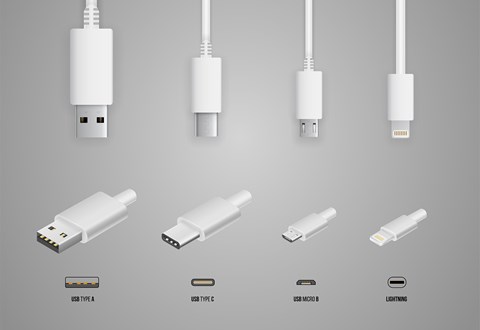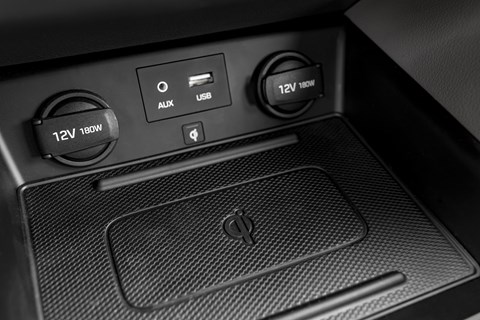► New Apple iPhone 15 switches to USB-C
► Motorists still lumbered with cables galore
► Short-term pain, long-term gain
Today’s news that the new Apple iPhone 15 is dropping its Lightning port in favour of the same USB-C connector used by Android phones ushers in yet more cabling complication for Europe’s motorists.
I have a drawer in my desk stuffed with many of the cables you see here. I bet you do, too. Most are from archive phones of varying degrees of smartness, dating back to the early days of my mobile CV: the Nokia banana, Ericcson flip, Windows monstrosities, Qwerty Blackberries and iPhones that oscillated through myriad long-forgotten plugs and sockets over the years.
Car manufacturers have had to navigate this tricky tightrope, keeping up with which ports to support. They’ve hopped from 3.5mm jacks through early iPod plugs, USB-A and now USB-C. It can be a connectivity catastrophe if you’re travelling in multiple cars – and many older devices still need to be plugged in if they can’t use wireless Bluetooth, CarPlay or Android Auto to connect.

And don’t get me started on wireless charging pads… I often find they’re too slow to top up the charge being drained, meaning that the physical connector is still regularly used, no matter what the techheads say.
USB car connectors: a handy guide
Most car manufacturers have now settled on the Universal Serial Bus (USB) C, the most common socket found in modern vehicles.
Now that Apple has been forced to follow suit with the iPhone 15 Pro, it will – eventually – make our lives somewhat easier, although iPhone-toting motorists may have to buy a replacement for their trusty Lightning cables in the short term.

The 2023 Apple iPhone 15 switching to USB-C will accelerate the adoption of this standard in all new cars. Earlier USB sockets are set to be phased out pretty quickly, according to our manufacturer sources.
The change is being enforced by the European Commission, which is on a mission to standardise connectivity for greater portability, cost and environmental reasons. A decade ago, there were upwards of 30 device chargers and that has now dropped to three, and soon one. New rules will force all smartphones, tablets, cameras, headphones, portable speakers and handheld videogame consoles sold in Europe to adopt USB-C.
Smartphone cables: costing consumers billions a year
Around 420 million portable electronic devices are sold in the EU each year, making this a very real, very large problem. Each consumer owns an average of three mobile phone chargers, Brussels estimates – costing the public €2.4 billion (£2.1bn) and causing 11,000 tonnes of e-waste each year.
Forcing Apple to adopt USB-C seems a good idea, long term. Just make sure you hold on to your old cables for now – as I suspect we’ll still need those old wires for many years to come.

Although cars have become more like fast-moving consumer goods, their lifespan still typically stretches past a decade old. So today’s car vehicles will still require cables and plugs and wires to connect in the decades ahead, as they nudge into their dotage and cross the threshold to classic status.
Unless I’ve somehow got my wires crossed, there’ll still be promotional shelves of cables and adapters in motorway service stations for many years to come.